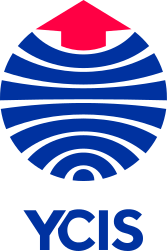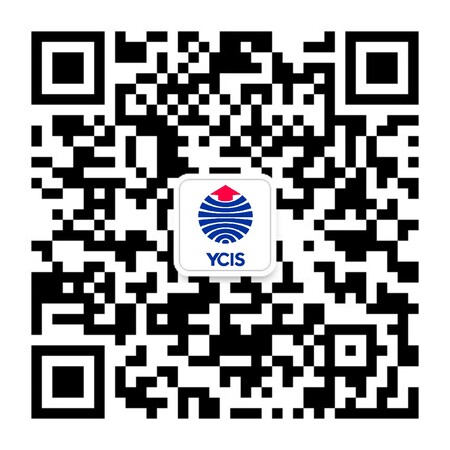Go Back
News
News
PODCAST: Integrating Technology with Education
News
17 Oct, 2016
10 : 00
In partnership with the American Chamber of Commerce in China, the Yew Chung International School of Beijing’s (YCIS Beijing) Western Co-Principal Noel Thomas and Secondary School Vice Principal Don Collins spoke on the soft skills the school strives to imbue in students as well as the technological “mega trends” shaping society today.
Below, you can view Mr. Thomas’s and Mr. Collins’ transcribed answers or listen to the whole podcast through the embedded link.
Want to learn more about what YCIS Beijing is doing to help children to develop these vital soft skills and embrace societal mega trends? Register for our upcoming Open Day during which Mr Collins will answer these questions and much more!
Many companies are thinking 2-5 years out, but in education you have to think about the current business climate and think 10-20 years out to see what kind of skills children will need to thrive as adults. What do you consider the key skills for the 21st century and how do you incorporate those skills into your curriculum at YCIS?
Don: It’s an interesting scenario, predicting the skills and the employment opportunities that will exist as many haven’t been created yet, but some things have been very important and continue to be important in business. These are what we refer to as soft skills: the capacity to work with other people, to communicate effectively, to be articulate in the ways in which you express your ideas, knowledge, and understanding. Then there’s the other capacity to communicate in the mediums of the current day. In education, we need to make sure we’re giving these soft skills to students, but also giving them access to the tools available today. At one point, the pen was the best piece of technology we had, but today it’s using the current-day technology to create graphics and understand data, then send that out to the world in a variety of formats.
As parents, and educators, we want to make sure we give our kids the skillsets to negotiate their pathway to success. Working well with people, delivering on time, and thinking creatively and divergently are all becoming much more important skills than ever before. To do that, we need to give them experience as well as structure and framework. So when we’re trying to think about that, and what the world is going to be like in 15-20 years in employment, we don’t really know; however, we do have a fair idea of the adaptability we need in students and the way in which we educate them in the skills we think are important.
Technology is a tough subject; some parents are rightly worried about too much screen time for their kids, but at the same time they need their kids to set up their Netflix account! How do you guys handle the balance of having a healthy relationship with technology, and limiting screen time, while making sure you have digital, native, technologically savvy kids?
Noel: It’s interesting you mention the term digital native there. I’m not a great lover of the expression because it implies that children of today are particularly adept at using technology; in many respects they know less about it than we did. We as adults have had to manage complex tasks and resolve problems that have effectively been managed now by far better UI and vastly faster and more efficient technologies. The term digital native can be seen to be as at an advantage when in fact they’re not.
I think that goes to what Don is saying in that we need to teach them information management skills to ensure they are informed citizens. They won’t necessarily become that just because they have access to the technology. I think we would all argue for balance, and that balance is around physical activity, making sure kids get out and about, and make sure they have direct communication with people.
One of the false things that parents will present about technology is that it is isolating, that somehow the kids who are looking at these screens are isolated form the world. In reality, the children of today are more connected than any other generation in history by a long shot. I turn my focus to those mega trends in society and try to educate parents around what those huge developments are. I tell parents that unless their children are using tech effectively and efficiently, their children will fall behind when dealing with these megatrends.
There are a number of them, but there are three I would choose to focus on. The first is connectedness: we are living in a world that is incredibly connected. Kids are adopting interesting and effective ways to express that connectedness. They are inherently social, but isn’t it interesting how they express those patterns? For example, my kids make far fewer phone calls; my son is not interested in talking to me over the phone, but he’s very interested in communicating with me, so we’ll use various forms of text to communicate. My daughter is the same; they connect with each other through those other vehicles like Snapchat, Whatsapp, and so forth. I see those as very positive tools and ones that are making important connections.
Don: They’re tools that suit kids. I think it’s also about adjusting time management. Kids won’t bother to learn how to change a bike tire until they need it, at which point they’ll google it, find the info they need, check with Jonesy who got a flat last week and see if there’s anything else they need to know, and bang, all on the spot.
Noel: I think the other thing we’re seeing, and that goes along with the issue of screen time, is that it’s a very visual world. That’s another of these mega trends: it’s visual. You look at the extraordinary speed of development of emoji’s for communication. I’m even starting to send them now! Oddly enough, while I can use words, I can get the message across more easily and speedily using images. The modern gifs to replace the emoji’s are also interesting to see. Students as young as five or six are becoming adept at recording images and pretty quickly they get to edit them. I was in a class yesterday doing an interview with Year Four students where they were putting together a video of all the jobs that are performed around the school. That project will be a far more informative output than the posters we might have done back when I was at school. There’s still a place for those, but that visual nature of the world is shifting education and shifting society.
The third mega trend I would mention is choice. It goes partly with what Don is saying regarding the information available now, and the range of choices students have in terms of what they’re looking for and how they’re looking for it, e.g. the websites they’ll use. There’s also a huge choice in how they’ll communicate how they’ll transport themselves, what courses they’ll undertake; wherever you look, we’re starting to see more choice being available.
You must look at a growing range of choice often driven by technology, an increasing tendency towards the visual being driven by technology, and connectedness. When a parent ask me if their kids are spending too much time with their computing tech, I respond that I can’t think of a better device to learn about connectedness, to take advantage of choice, and to engage in the visual world we live in.












